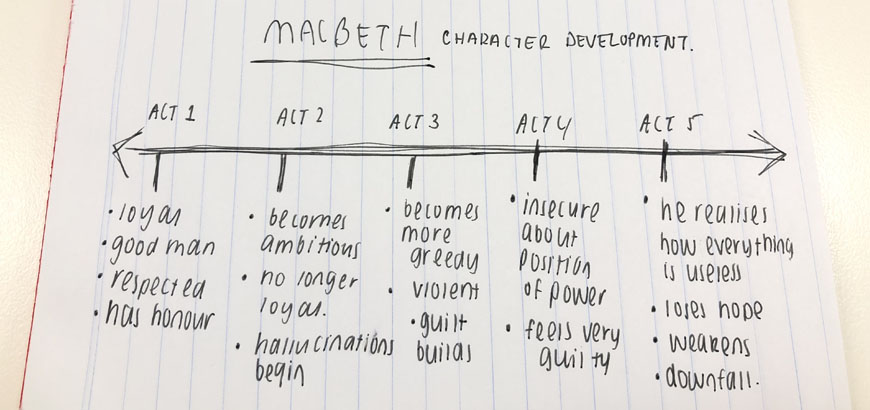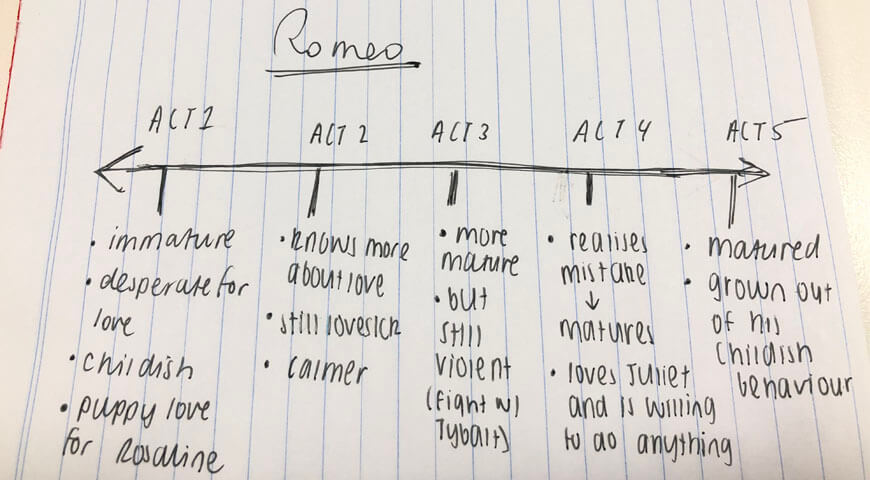Welcome to Matrix Education
To ensure we are showing you the most relevant content, please select your location below.
Select a year to see courses
Learn online or on-campus during the term or school holidays
Learn online or on-campus during the term or school holidays
Learn online or on-campus during the term or school holidays
Learn online or on-campus during the term or school holidays
Learn online or on-campus during the term or school holidays
Learn online or on-campus during the term or school holidays
Learn online or on-campus during the term or school holidays
Get HSC exam ready in just a week
Select a year to see available courses
Science guides to help you get ahead
Science guides to help you get ahead

Guide Chapters
Whenever someone says Shakespeare, you will hear a chorus of groans from High School students. However, this is only because it seems hard to study. In reality, there are methodical steps that will help you easily understand and analyse Shakespeare texts. Read on to see how to analyse Shakespeare in year 9.
Many argue that William Shakespeare is the greatest playwright of all times. But that’s not the only reason why we study his work.
We study Shakespeare because:
This just shows how Shakespeare is still relevant today. We know that texts reflect the context that they are made in, so by comparing the original play with the remakes, we can identify similar values and perspectives and how society has changed over time.
At first glance, Shakespeare seems like a whole new language. However, once you apply these methods, you will see that it is actually quite easy to understand Shakespeare’s plays.
Matrix students are taught this method to better understand and analyse texts.
Shakespeare’s plays were written 4 centuries ago. Obviously, their language is going to be different.
The first step to reading and understanding a Shakespearean play is understanding their language.
Here is a list of common words in Shakespeare’s plays:
| Table: List of common Shakespearean words | ||
Shakespeare’s English | Modern English | Example from Shakespeare’s play |
| Adieu | Bye | “Adieu! I have too grieved a heart to take a tedious leave” – The Merchant of Venice |
| Alas | An exclamation of sadness, sorrow, pity or regret | “Alas, poor Yorrick! I knew him” – Hamlet |
| Art | Are | “Romeo, Romeo, Wherefore art thou Romeo” – Romeo and Juliet |
| Ay | Yes | “Ay, my good lord.” – Macbeth |
| Dost | Do | “Unthrifty loveliness, why dost thou spend Upon thy self thy beauty’s legacy?” – Sonnet IV |
| Doth | Does | “The lady doth protest too much, methinks” – Hamlet |
| Do’t | Do it | “I will do ’t, my lord.” – Hamlet |
| Hath | Has | “When the rich golden shaft hath killed the flock of all affections else” – Twelfth Night |
| Hence | Away | “Hence! Home, you idle creatures get you home!” – Julius Caesar |
| Hie | Hurry / Move with haste | “Hie thee hither!” – Macbeth |
| Know’st | Know | “Thou dost love her, because thou know’st I love her;” – Sonnet XLII |
| Nay | No | “Nay, but, Ophelia—” – Hamlet |
| O’er | Over | “In viewing o’er the rest” – Macbeth |
| Sirrah | Sir | “Go, sirrah, take them to the butterfly” – Taming of the Shrew |
| Thee thou | You | “Thou liest, most ignorant monster.” – The Tempest |
| Thy, thine | Your | “Thou didst hold him in thy hate” – Othello |
| ‘Tis | It is | “‘Tis not the kind that sends you to the tower” – King Richard III |
| ‘Twas | It was | “How didst thou know ’twas she?—Oh, she deceives me” – Othello |
| Wherefore | Why | “Romeo, Romeo, Wherefore art thou Romeo” – Romeo and Juliet |
However, knowing these words are not enough for understanding Shakespeare’s language. You also have to know what the stage directions mean.
Let’s take a look at some stage directions:
Stage Directions | Meaning |
| Aside | When a character speaks to the audience but not to the other characters onstage. It is similar to saying a thought aloud. |
| Enter | When a character comes onstage. |
| Exit | When one character leaves the stage |
| Exuent | When more than one character leaves the stage |
| Solus | When a character is alone on the stage |
Now that you know the language used in Shakespeare’s play, let’s take a closer look at how to break down and understand a single scene.
Shakespeare can seem intimidating, but don’t worry. You need to take small, methodical steps to approach the text, starting with understanding the scenes.
Scenes make up Acts. They are usually defined by a set of characters, carrying out an action in a single location, over continuous time. Usually, when these aspects change it begins a new scene.
So what can we do to help us better understand scenes?
Sometimes, reading a scene can be difficult because there might be too many characters or it may include lengthy descriptions.
To help, you can read the scene aloud, act out the scene or imagine it play out in your head. You can also write notes or annotate.
It is important that you always take note of character development when you analyse Shakespeare’s plays.
Character development refers to two ideas:
Shakespeare is known for his complex and multifaceted characters. They have flaws, desires, inner conflicts and complex relationships with other characters.
This gives you a lot to analyse when reading Shakespeare.
We can see Shakespeare’s characters respond to events, change and grow.
The famous Shakespearean literary scholar Harold Bloom calls this the “phenomenon of overhearing.”
Overhearing is when a character is self aware of their thoughts and actions, allowing them to self-reflect and grow.
Shakespeare often does this through soliloquies.
Think, Macbeth’s “Tomorrow, tomorrow, tomorrow” soliloquy in Macbeth.
Let’s consider the context of this soliloquy. In the first half of the text, Macbeth ambitiously strives to become king. However, as things spiral out of control and Lady Macbeth kills herself, Macbeth realises that nothing is important anymore.
To him, every day is now just as tedious as the next.
This character development is important because it helps emphasise Shakespeare message; if you lose your integrity in your quest for power, you will suffer consequences.
If it helps, when you’re writing your notes, draw a timeline of the characters and their character development throughout the play. This will be helpful when you are analysing Shakespeare.

A plot refers to the main events of a play.
A subplot refers to secondary stories that usually develops on its own; different to the main plot.
Shakespeare’s plays are complex because he interweaves various subplots into his story.
Let’s see how subplots work:
For example, The Merchant of Venice‘s central plot is the conflict between Antonio and Shylock. Here, Antonio borrows money from a Jewish moneylender, Shylock, to help his friend Bassanio court Portia. Shylock lends Antonio money under the condition that he will receive a pound of Antonio’s flesh if he cannot pay. So, when Antonio’s ships sink, Shylock does everything to get his pound of flesh.
However, concurrent to this plot are numerous other subplots.
One example is Portia’s courting situation. In this subplot, Portia’s father will only marry off Portia to the man who chooses the right casket. Up until Bassanio, every other suitor has failed.
We can see that this subplot relates to the main plot because Antonio borrowed money to fund for Bassanio’s courting of Portia.
This is just one example of how subplots aid the development of the main plot.
You have to take note of the different sub-plots and how it relates to the main plots.
Now that you know about scenes, plots and subplots, it is time to consider the whole play.
To do this, you need to:
Then, collate all your findings to see the whole play. Remember, to write them down in your notes so you can easily refer to it again.
Now that you know how to read and understand a Shakespeare play, let’s see how we can analyse it step by step.
To do this, we will take a look at Act 3, Scene 5 of Shakespeare’s Romeo and Juliet.
| Enter ROMEO and JULIET aloft.
Wilt thou be gone? It is not yet near day. It was the nightingale, and not the lark, That pierced the fearful hollow of thine ear. Nightly she sings on yon pomegranate tree. Believe me, love, it was the nightingale. ROMEO It was the lark, the herald of the morn, No nightingale. Look, love, what envious streaks Do lace the severing clouds in yonder east. Night’s candles are burnt out, and jocund day Stands tiptoe on the misty mountain tops. I must be gone and live, or stay and die. JULIET Yon light is not daylight, I know it, I. It is some meteor that the sun exhales To be to thee this night a torchbearer, And light thee on thy way to Mantua. Therefore stay yet. Thou need’st not to be gone. ROMEO Let me be ta’en. Let me be put to death. I am content, so thou wilt have it so. I’ll say yon grey is not the morning’s eye. ‘Tis but the pale reflex of Cynthia’s brow. Nor that is not the lark, whose notes do beat The vaulty heaven so high above our heads. I have more care to stay than will to go. Come, death, and welcome! Juliet wills it so.— How is ’t, my soul? Let’s talk. It is not day. JULIET It is, it is. Hie hence! Be gone, away! It is the lark that sings so out of tune, Straining harsh discords and unpleasing sharps. Some say the lark makes sweet division. This doth not so, for she divideth us. Some say the lark and loathèd toad change eyes. Oh, now I would they had changed voices too, Since arm from arm that voice doth us affray, Hunting thee hence with hunt’s-up to the day. O, now be gone. More light and light it grows. ROMEO More light and light, more dark and dark our woes! |
But, before we go on, here is a quick summary of Romeo and Juliet.
The family of Capulets and Montagues have a long-standing feud.
One day, Romeo (a Montague) and Juliet (a Capulet) falls in love. They both marry secretly. However, because Romeo attempted to kill Juliet’s kinsman, Tybalt, he is exiled.
They attempt to see each other again, but Juliet’s family wants to marry her off to Paris. To avoid marriage, Juliet drinks a poison. Romeo finds out about her death and also kills himself beside her.
However, Juliet wakes up because the poison was just a ruse, but when she sees Romeo dead, she stabs herself and dies.
When the families find the two dead bodies, they realised the destructive nature of their feud and reconcile.
The first step to analysing a Shakespearean passage is reading it.
Yes, this might seem intimidating, but following these steps will make it a lot easier.
Now read the above passage.
It’s okay if you don’t fully understand it. In this step, just make sure you understand the gist of the passage.
Here, Romeo is about to leave Juliet to begin his exile, but Juliet tries to convince Romeo to stay. She does this by saying that the bird’s call was that of a nightingale (night bird) and not a lark (morning bird). Romeo disagrees and tells her that it is the lark and he must leave or he will be killed, but Juliet insists that it is still night.
So, out of love, Romeo gives up on leaving and agrees that it was a nightingale. However, this makes Juliet change her mind and she agrees that it is a lark and tells him to leave.
Paraphrasing is when you reword something to make it clearer and easier to understand.
When you analyse Shakespeare, you need to paraphrase the words by translating it to modern English.
This will make it easier to understand what is written.
For example, “Wilt thou be gone? It is not yet near day. It was a nightingale, and not the lark”
Can be translated to “Will you be going? It is not daytime yet. It was a nightingale, not a lark”
Don’t forget to annotate your copy of the play and write a short summary in your notes to remind you of your paraphrases.
This will make it easier to understand what is going on when you are returning to the text and specific scenes.
Shakespeare doesn’t just use different words, his plays are also written very poetically. (Click here if you need a reminder of the table of Shakespeare’s language)
He is known for his use of metaphors, extended metaphors, puns, double entendres, and vivid descriptions.
When you analyse Shakespeare, make sure that you identify these techniques to fully understand what is being said.
For example, the line “More light and light more dark and dark our woes!” is a metaphor for Romeo and Juliet’s relationship.
However, you can’t just leave it there, you also need to…
Now, we need to find the meaning of any techniques you found earlier.
To do this, we need to relate the technique to the themes and find the significance of the technique used.
The themes in Romeo and Juliet are love, fate and destiny, and individual versus society.
Now let’s take a closer look at the line “More light and light. More dark and dark our woes!“.
We can see that light is the lover’s enemy. When the morning comes, Romeo will be killed if he is seen with Juliet.
As such, this metaphor is ironic because light is usually associated with “good” and darkness, “bad”. However, it is the opposite in this situation.
So, this represents how society’s categorisation of what is good and bad (as in the Montague and Capulet’s idea that the other family is ‘bad’) is actually inaccurate and destructive.
Shakespeare’s plays are usually written in a 5 Act structure; exposition, rising action, climax, falling action and resolution.
With this knowledge, we know that this passage (Act 3 , Scene 5) is the climax of the play because it is when the most intense events occur.
Remember, you can’t just rely on the Act number to indicate its location on the story arc. You need to know the plot and what is happening in the passage to figure this out.
Now that we know that this passage is in the climax of the play, you need to keep this in mind for the next few steps.
We know that Shakespeare’s characters change and grow throughout the story.
And obviously, there is a growth pattern depending on the character type and which part of the story we are looking at,
This is why it is important that we know the structure of the play and where our passage is situated.
Let’s take a look at Romeo’s character arc.
At the beginning of the play, he is immature and desperate for love. However, as the drama goes on, he matures and so does his love. It is no longer puppy love, it becomes passionate.
This passage highlights his maturing love. We can see that his love overrides his fear of getting caught, and he is willing to stay with Juliet. We know that he is willing to do almost anything for his love.

Now that we know where the passage lies in the story arc, we need to see how it develops the whole story.
This means looking at the purpose of this passage.
We know that this passage is in the climax of the play. But why is it important?
When we look at Romeo’s willingness to stay with Juliet despite getting caught, we can see that it foreshadows his future suicide for love.
Also, the metaphor “More light and light. More dark and dark our woes!” uses the motif of light and darkness. Throughout the whole play, Shakespeare used this imagery to represent Romeo and Juliet’s changing relationship.
Now that we have all the information needed, we need to put all of our findings together to analyse Shakespeare. This is where you find what Shakespeare is saying.
Let’s recap what we have:
From this, we gather that Shakespeare is highlighting the need to remove societal categorisations of people because it can cause detrimental harm to others. We also see that he is promoting the reconciling power of love over violence.
Develop your English techniques and skills and boost your confidence with our Year 9 English Term Courses!
Remember when we mentioned that there are many reimaginations of Shakespeare? Well, the most common form that remakes Shakespeare is film!
Next in Part 6: How to Analyse Film, we will guide you through all the needed steps to understand and analyse a film.
© Matrix Education and www.matrix.edu.au, 2023. Unauthorised use and/or duplication of this material without express and written permission from this site’s author and/or owner is strictly prohibited. Excerpts and links may be used, provided that full and clear credit is given to Matrix Education and www.matrix.edu.au with appropriate and specific direction to the original content.